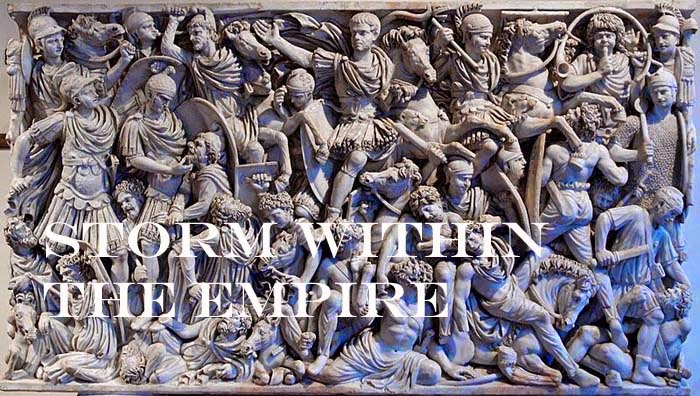Interest in
the Low Countries of the 15th century came as a result of my
researching the Holy Roman Empire with a final goal of developing a campaign
game, similar to one made for the Merovingian period. The Low Countries of the
period encompassed modern day Netherlands, Belgium, Luxemburg, parts of
Northern France and some German lands bordering Limburg. For most of the
century these were the sovereign domains of three dynastic families, Luxembourg,
Hapsburg and Wittelsbach.
Broadly
speaking, the House of Luxembourg held Limbourg, Luxembourg and Brabant, which
reached as far south to France and the House of Wittelsbach, the counties of
Holland, Hainaut, Zeeland and Friesland by the first half of the 15th century
slowly losing territory from dynastic marriages to Burgundy. Following the
death of Charles, the Bold, the House of Habsburg asserted its sovereignty over
Burgundian territories gaining all by the first quarter of the 16th century.
During the 15th century, the Low Countries experience of economic
and social growth among its urban centres followed a similar path to that experienced
in Northern Italy and Northern Germany, but its town councils asserting more
power than other parts of Europe. This was a time when trade and prosperity generated
a relative period of peace. Yet, it was not without its disagreements.
There were few major battles in the Low Countries during this time, but in its place were an abundant number of skirmishes, sieges and plunder raids such as the one which devastated the Hague in 1528. High taxation, trade and customs barriers and succession disputes often led to conflicts between the duchies and counties of the Low Countries (see link below) and fortunately, many are documented in Dutch or the Frisian language. My research continues, but from what has been done I will pass on a few observations.
The DBA list
The sub-list
IV/57c (1411-1478) for the Low Countries gives a large number of pikemen
supported by billmen, crossbow, handgunners and artillery with a home terrain
of arable. Designing a historical scenario, one may wish to consider adding a
few optional troop types and include a second home terrain.
Geography
An arable home
terrain suits the Low Countries, yet as one passes north of the Maas and Rhine
rivers, littoral would seem a better fit. The Maas River empties into the North
Sea passing the islands of Zeeland; the Amstel, Eem and Ijssel Rivers empty
into the Zuiderzee whose shoreline touches the counties of Holland, Friesland,
the Duchy of Gelderland and the Bishopric of Utrecht. More importantly, the
cities of Deventer, Groningen, Arnhem, Nijmegen, Zutphen, and Zwolle were a
part of the Hanseatic League, all with harbours on the coast or inland. Lakes,
bogs and marsh were common enough to be present on the game board and with and
for the modeller, most castles or fortified manor houses did have moats.
List
review
In the link
below you have long list of internal conflicts, yet what is surprising, 57c is
not listed as an enemy of itself. This is well the case with the Italian Condotta
and the Medieval German, likewise, 57c should also be listed as an ally to
reflect mutual assistance among counties and duchies.
While north
of the Maas and Rhine River is not cavalry country, ducal retinues (3Kn/4Bd) or
mercenary cavalry (Cv) would not be out of place on the battlefield, albeit in
small numbers. At the Battle of Brustem (1467) 500 cavalry were present on the
side of Liege when they faced a Burgundian host.
At times, guild
infantry was less than enthusiastic to take to the field and in their place, mercenaries
were hired from Flanders or Brabant. This can be listed as a separate entry for
a portion of guild pikemen (4Pk or 7Hd).
Main
holdings:
House of
Luxembourg
Limbourg,
Luxembourg, Brabant, Silesia, Bohemia and Moravia. They also provided two Holy
Roman Emperors (1355-1378, 1368-1437)), one King of Bohemia (1346-1378), one
King of the Romans (1346-1378),
House of
Wittelsbach
Bavarian,
the Palatinate, Brandenburg, the counties of Holland, Hainaut, Zeeland and
Friesland, provided one Holy Roman Emperor (1328-1347), one King of the Romans
(1400-1410), one King of Hungary (1305–1309) and one King of Denmark and Norway
(1440–1448).
House of
Hapsburg
Principle
holdings included Austria, Steiermark, Carinthia, Krain, Tirol, Sundgau and
Breisgau adding later Burgundy following the death of Charles the Bold.
Two
finely painted armies of the Low Countries.
Low Countries (Ghent) DBA Fanaticus (paddy649)
Low Countries DBA Fanaticus (goragrad)
War in theNetherlands in the Middle Ages (Wiki)
List of Castles in the Netherlands
Map: Muir's Historical Atlas - Medieval and Modern, London 1911, Internet Medieval Sourcebook, Paul Halsall




















